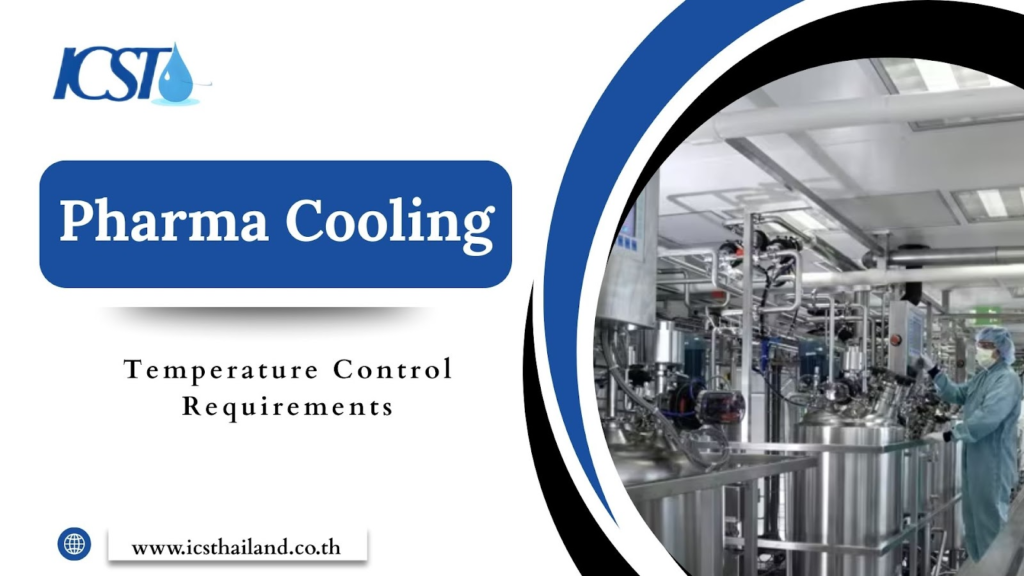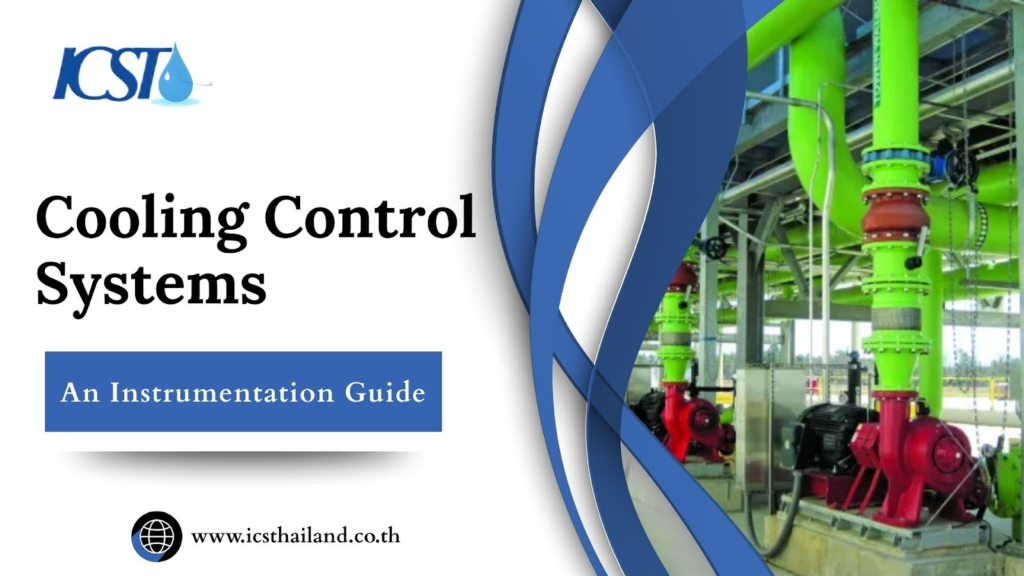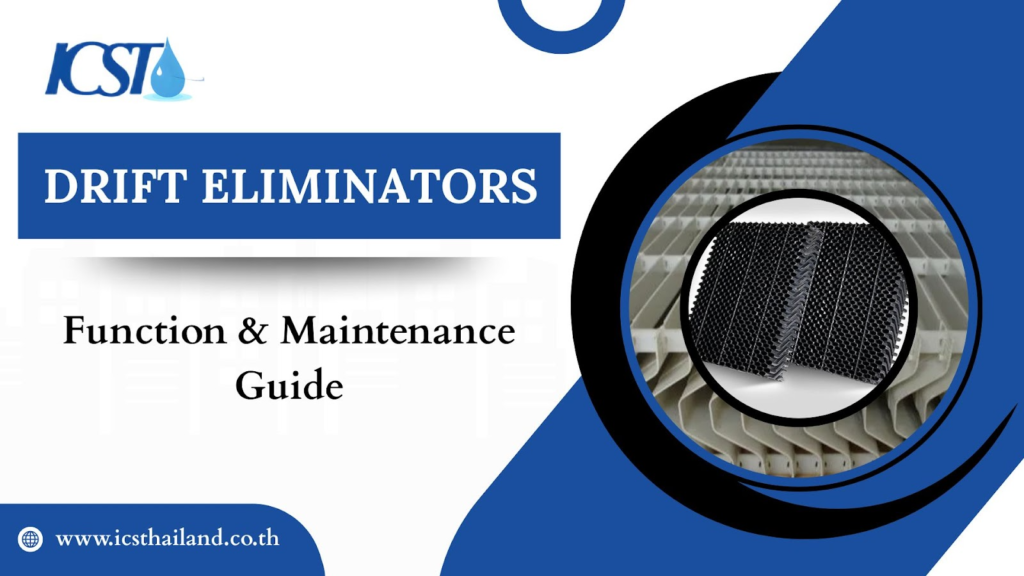When it comes to power generation, one vital component often flies under the radar: the cooling tower. These towering structures are the quiet workhorses of thermal power plants, tirelessly managing heat to keep operations running smoothly.
Cooling towers in power plants face unique challenges that set them apart from typical industrial applications. A single cooling tower failure can force an entire power generation unit offline, resulting in millions of dollars in lost revenue and potential grid instability.
The design and maintenance of these systems require specialized knowledge that goes far beyond standard cooling tower practices. From managing massive water volumes to ensuring compliance with strict discharge regulations, power plant cooling towers demand expert-level attention to detail.
This comprehensive guide explores the critical design considerations and maintenance strategies that keep these essential systems running efficiently, helping facility operators maximize performance while minimizing operational risks.
Table of Contents
ToggleThe Indispensable Role of Cooling Towers in Power Generation
Power plant cooling towers serve a mission-critical function that directly impacts both operational efficiency and environmental compliance. These systems reject waste heat from steam condensers, maintaining the vacuum conditions necessary for optimal turbine performance.
The scale of operation sets power plant cooling towers apart from their commercial counterparts. A standard 500-megawatt coal power plant produces about 1,000 megawatts of excess heat that needs to be consistently dissipated.
This enormous thermal load requires cooling systems capable of circulating tens of thousands of gallons per minute while maintaining precise temperature differentials.
Why Cooling Towers are Crucial
The relationship between cooling tower performance and overall plant efficiency is direct and measurable. Every degree of improvement in cooling tower effectiveness translates to enhanced condenser vacuum, improved turbine efficiency, and increased power output.
Cooling towers serve two critical environmental functions:
- Prevention of Thermal Pollution: Cooling towers help protect natural water bodies by rejecting waste heat into the atmosphere instead of discharging it directly into rivers or lakes. This reduces the risk of thermal shock to aquatic ecosystems, a growing concern as environmental regulations become stricter and public awareness of ecological impacts increases.
- Water Conservation: With rising water scarcity, modern cooling tower operations focus on improving efficiency while reducing water consumption. Advanced designs and maintenance practices can lower makeup water requirements by 20-30% compared to older systems, supporting sustainable operations..
Designing Cooling Towers for Energy Production Facilities
Core Design Principles for High-Capacity Applications
Power plant cooling towers must be engineered to handle heat rejection demands that dwarf typical industrial applications. How do engineers approach the challenge of designing systems capable of continuous, high-volume operation? The answer lies in understanding three fundamental design principles.
- Massive Heat Load Management: Sizing calculations for power plant cooling towers require precise thermal modeling to ensure adequate capacity during peak summer conditions when ambient temperatures soar and cooling efficiency naturally decreases
- Thermal Performance Optimization: Design specifications typically target approach temperatures of 5-10°F and cooling ranges of 20-30°F to maximize overall plant efficiency while maintaining reasonable water consumption rates
- Redundancy and Reliability Integration: Multiple-cell designs with individual fan systems ensure continued operation even during maintenance or equipment failures, preventing costly plant shutdowns
Environmental compliance requirements shape every aspect of cooling tower design for power generation applications. Noise regulations limit fan speeds and require acoustic treatments, while plume abatement systems may be necessary to prevent visible emissions during certain weather conditions.
Types of Cooling Towers in Power Plants
Selecting the appropriate cooling tower type for power generation facilities requires careful analysis of site conditions, operational requirements, and economic factors. What are the key considerations that drive these critical design decisions?
Mechanical Draft Towers
- Induced Draft vs. Forced Draft: Induced draft configurations dominate power plant applications due to superior performance characteristics, reduced recirculation potential, and better protection of mechanical components from corrosive environments
- Multi-Cell Design: Large power plants typically employ 6-12 cooling cells per unit to provide operational flexibility, maintenance access, and redundancy during peak demand periods
- Fan & Drive Systems: Heavy-duty fans ranging from 24-40 feet in diameter move massive air volumes, requiring robust gearboxes rated for continuous operation and variable frequency drives for energy optimization
Natural Draft Towers (Hyperboloid)
Natural draft towers represent the pinnacle of large-scale cooling technology for base-load power generation. These concrete giants, often exceeding 400 feet in height, rely on buoyancy-driven airflow to achieve cooling without mechanical fans.
Key Components & Their Power Plant Specific Design
The demanding environment of power plant cooling towers requires component selection and design that goes beyond standard industrial practices. How do engineers ensure reliable performance under these extreme conditions?
Fill Media Selection
- Film Fill Systems: High-efficiency film fill provides maximum heat transfer surface area per unit volume but requires excellent water quality and regular maintenance to prevent fouling and scaling
- Splash Fill Applications: More forgiving of poor water quality and biological growth, splash fill systems offer reliable performance with reduced maintenance requirements at the cost of lower thermal efficiency
- Hybrid Configurations: Some installations combine film fill in upper sections with splash fill below to optimize both efficiency and maintainability
Drift Eliminators
Drift elimination takes on critical importance in power plant applications due to the massive air and water volumes involved. Even small drift rates can result in significant water losses and potential environmental compliance issues. Modern drift eliminators achieve removal efficiencies exceeding 99.95% while maintaining low pressure drop across the air path.
Water Distribution Systems
Power plant cooling towers require distribution systems capable of handling flow rates exceeding 100,000 gallons per minute while maintaining uniform coverage across expansive fill areas. Gravity-fed distribution basins with precisely engineered orifices provide reliable, low-maintenance operation compared to pressure spray systems.
Basin design must accommodate massive water volumes while providing adequate pump suction conditions. Reinforced concrete construction with chemical-resistant coatings withstands the aggressive environment created by treated cooling water and continuous thermal cycling.
Essential Maintenance for Industrial Cooling Towers
The Imperative of Continuous Uptime
Cooling towers in power plants play a vital role in supporting generation assets valued at hundreds of millions of dollars. A single cooling tower failure during peak summer demand can force unit derating or shutdown, resulting in lost revenue exceeding $100,000 per day. This economic reality drives maintenance philosophies that emphasize prevention over reaction.
Predictive maintenance technologies are transforming cooling tower care in power generation. These advanced tools help identify and address potential issues before they affect performance. Key technologies include:
- Vibration Monitoring Systems: Continuously track the condition of fans and gearboxes to detect early signs of wear or failure.
- Thermal Imaging: Pinpoints fill fouling and distribution problems, enabling proactive maintenance to maintain optimal performance.
- Water Quality Monitoring: Provides real-time feedback on the effectiveness of water treatment programs, ensuring efficient operation.
Specialized Inspections & Monitoring
Regular assessment of cooling tower condition requires specialized knowledge and equipment suited to the scale of power plant installations. What are the key inspection protocols that ensure reliable operation?
- Thermal Performance Testing: Comprehensive testing protocols measure approach temperature, cooling range, and heat rejection capacity under varying load conditions to verify design performance and identify degradation trends
- Vibration Analysis: Advanced monitoring systems track fan assembly condition using accelerometers and displacement sensors, enabling predictive maintenance scheduling before catastrophic failures occur
- Structural Integrity Checks: Detailed inspections of concrete shells, FRP components, and timber structures identify stress cracking, corrosion, and deterioration that could lead to structural failure
- Water Flow & Distribution Audits: Flow measurement and visual inspection verify uniform water distribution across all fill sections, identifying clogged nozzles or damaged distribution components
Advanced Water Chemistry Management
Water treatment for power plant cooling systems requires sophisticated chemical programs tailored to high-volume, continuous operation. The chemistry challenges extend beyond typical scale and corrosion control to include biological growth prevention and environmental compliance.
Water Analysis Protocols:
- Monitors multiple parameters, including pH, conductivity, hardness, alkalinity, chlorides, sulfates, and microbial content.
- Utilizes automated sampling systems for continuous data collection, enabling real-time treatment adjustments and trend analysis.
Chemical Treatment Programs for Cooling Systems:
- Corrosion Inhibitors: Protect materials like carbon steel and copper alloys from degradation.
- Biocides: Control microbial populations (both planktonic and sessile) that can hinder heat transfer and cause microbiologically influenced corrosion.
Large-Scale Cleaning & Descaling
The massive scale of power plant cooling towers creates unique cleaning challenges that require specialized equipment and procedures. How do maintenance teams tackle cleaning operations on systems handling millions of gallons per hour?
Biofouling Control
- Automated Biocide Systems: Continuous or intermittent biocide addition systems maintain residual concentrations that prevent biofilm formation on fill media and basin surfaces.
- UV Disinfection: Some facilities employ UV treatment systems for makeup water to reduce incoming biological load and supplement chemical biocide programs.
Fill Media Maintenance
Fill media cleaning represents one of the most challenging aspects of cooling tower maintenance due to the sheer volume of material involved. Power plant cooling towers may contain thousands of cubic feet of fill media arranged in multiple levels and sections.
Chemical cleaning programs using acid solutions remove mineral scale deposits, while alkaline cleaners target biological fouling.
Challenges and Solutions Power Plant Cooling Tower Management
Unique Operational Challenges
Power plant cooling towers face operational challenges that test the limits of both equipment and maintenance practices. What makes these systems particularly demanding compared to other industrial cooling applications?
High Heat Rejection Demands
Power generation facilities must maintain rated capacity regardless of ambient conditions, creating extreme stress on cooling systems during peak summer temperatures.
- Modern power plants face challenges with load-following operations, requiring cooling systems to adapt quickly to fluctuating thermal loads.
- Cycling between minimum load and full capacity increases stress on mechanical components.
- Advanced control systems are necessary to maintain optimal performance under changing conditions.
Water Stress Challenges
Growing water scarcity concerns increasingly impact power plant cooling operations. Regulatory pressure to reduce water consumption drives the adoption of dry cooling, hybrid wet-dry systems, and advanced water treatment technologies.
Zero liquid discharge requirements eliminate cooling tower blowdown, concentrating dissolved solids and increasing scaling potential.
Infrastructure Aging
Many power plant cooling towers were designed and built decades ago when water was abundant and environmental regulations were less stringent. Retrofitting these systems for modern performance and compliance standards requires creative engineering solutions and substantial capital investment.
Innovative Solutions for Industrial Cooling Towers
Modern technology offers unprecedented opportunities to improve cooling tower performance and reliability. Which emerging solutions show the greatest promise for power generation applications?
Advanced Water Treatment Technologies
- Side-Stream Filtration: High-rate multimedia filters remove suspended solids and reduce fouling potential while operating on a continuous basis without interrupting cooling water flow
- Membrane Technologies: Reverse osmosis and ultrafiltration systems concentrate cooling water beyond traditional limits while producing high-quality water for makeup applications
- Zero Liquid Discharge Systems: Crystallization and evaporation technologies eliminate cooling tower blowdown, recovering all process water while producing solid waste streams for disposal
Predictive Maintenance & IoT
IoT technology revolutionizes cooling tower monitoring by shifting from occasional inspections to ongoing condition tracking. Wireless sensor networks monitor vibration, temperature, flow, and chemical parameters in real-time, feeding data to artificial intelligence systems that predict maintenance requirements.
- Digital twin technology develops virtual replicas of cooling tower systems.
- Enables performance optimization and predictive maintenance scheduling.
- Combines real-time sensor data with thermodynamic calculations.
- Identifies opportunities to improve efficiency.
- Predicts component failure modes for proactive maintenance.
Energy Efficiency Upgrades
Variable frequency drives on fan motors provide significant energy savings while improving process control. Modern fan blade designs and motor technologies reduce power consumption by 15-25% compared to older installations.
Advanced fill media designs maximize heat transfer efficiency while minimizing pressure drop and fouling potential. Some new fill configurations provide 20-30% improvement in thermal performance compared to traditional splash fill systems.
Conclusion
So, what’s the big takeaway from all this? The reliable operation of cooling towers in power plants depends on a crucial blend of smart design and careful upkeep. We’ve seen how these giants are engineered to handle immense heat loads, ensuring your facility runs efficiently.
From advanced water chemistry to smart monitoring and energy upgrades, staying proactive addresses unique challenges like water stress and aging infrastructure. Investing in these vital systems isn’t just about preventing downtime; it’s about securing long-term efficiency, sustainability, and profitability.
Ready to optimize your cooling tower operations? Partner with ICST for expert design, maintenance, and upgrade solutions tailored to your power plant’s needs.
Frequently Asked Question
What do cooling towers do in power plants?
Cooling towers efficiently reject waste heat from steam condensers into the atmosphere. This maintains optimal vacuum for turbines, directly boosting the plant’s efficiency and power output.
How is cooling tower efficiency maintained in power plants?
Efficiency is maintained through robust design, rigorous proactive maintenance, and continuous performance monitoring. This includes specialized inspections, advanced water treatment, and timely component upgrades.
What new tech improves power plant cooling towers?
Modern solutions include advanced water treatment (like ZLD), predictive maintenance with IoT/AI, and energy-efficient upgrades (VFDs, optimized fill). These enhance reliability and reduce environmental impact.
What types of cooling towers are used in power generation?
Main types are Mechanical Draft Towers (fan-driven, often multi-cell) and Natural Draft Towers (large, relying on convection).








